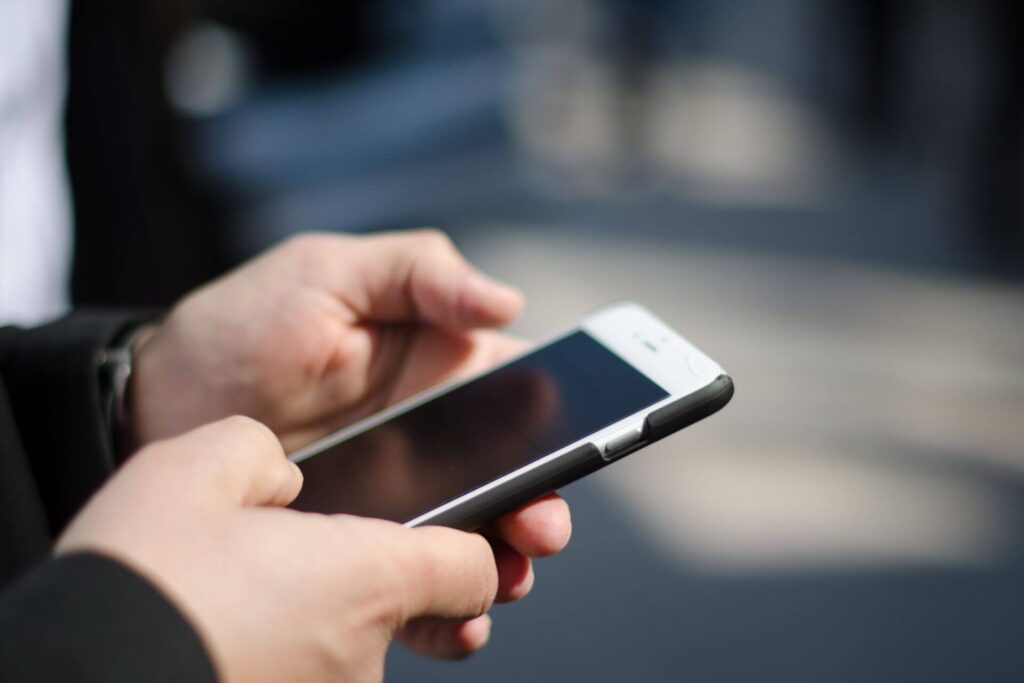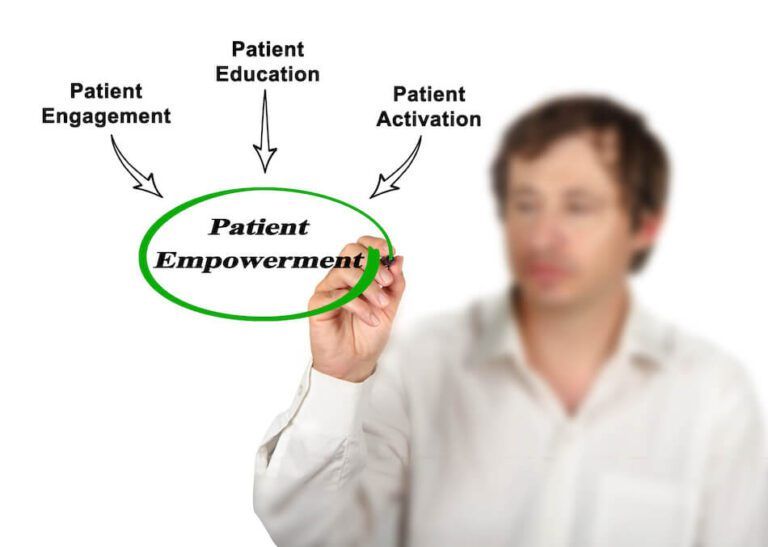How Text Messaging Can Accelerate Patient Flow in Hospital Emergency Departments
Introduction
Emergency Departments (EDs) are high-risk, intense environments, and when capacity is exceeded, there are opportunities for errors. Crowding poses risks to lives, has negative consequences for health, and is financially costly for providers. A crowded ED affects reputation and limits a provider’s ability to accept referrals.
Text messaging in healthcare holds great promise for improving efficiencies in workflow, increasing patient engagement, and supporting better patient care. So, can texting also help solve some of the complex challenges of the modern-day busy Emergency Room?
In business, texting is proving to be one of the most effective ways to communicate with customers. The pandemic has played a catalytic role in the development of communications in healthcare, and now the benefits of texting are hard to ignore.
Telemedicine has exploded and a revolution of texting in healthcare has begun. HIPAA compliant SMS messaging is proving to be a secure, highly efficient, and cost-effective way to stay in touch with patients and improve communication between staff.
This whitepaper looks at some of the most pressing patient flow problems in EDs and considers how texting might help to solve them.
Mobile Phone Growth, Facts and Trends

The way we use our phones has changed in the last decade, and during the pandemic significantly so. An SMS Survey Report found that more than half of Americans (51%) have texted more during the last year compared to other methods of communication.1
Mobile phone use has grown rapidly. The number of smartphone subscriptions worldwide today surpasses six billion and this is forecast to further grow by several hundred million in the next few years, says a recent report by Statista.2
New research by Zippia reveals that in the United States, Smartphone and cell phone use is at an all-time high.3 According to the Pew Research Center, the vast majority of Americans – 97% – now own a cell phone of some kind and (importantly for healthcare) this is spread across a wide range of demographic groups.4
More and more people depend on their phones to communicate, stay connected, and to search for information. Zippia report that the average cell phone user interacts with their phone more than 2,000 times every day, and that approximately 47% of web traffic in the U.S. originates from mobile devices.3
The pandemic has caused a seismic shift in the way people communicate. And while some face-to-face activity will naturally return, the convenience of connecting via mobile is now deeply embedded in the American psyche. Americans are increasingly connected to the world of digital information while “on the go” via smartphones and other mobile devices.4
SMS marketing trends show text messaging as the most popular marketing and consumer communication tool. Statistics show that nine out of ten consumers prefer SMS as their main channel of business communication.5
Research confirms the shift from email to text – SMS open rates are as high as 98%, compared to just 20% for emails. And, on average, it takes 90 seconds for someone to respond to a text whereas the average response times for emails is 90 minutes.6
A report by TechJury shows that 60% of customers read texts within 1-5 minutes after receiving them.7
Texting benefits are plain to see. But how can it help resolve challenges in EDs?
What are the major patient flow challenges in EDs?

The demand for efficient, high-quality healthcare has never been greater, but the pandemic has placed unimaginable strain on the world’s healthcare systems and EDs are feeling the pressure.
When hospitals fail to cope with demand, Emergency Rooms suffer. Crowding threatens patient safety and has several consequences. Not getting treated quickly enough can be life threatening or outcomes can be made worse. A patient not receiving a timely intervention of antibiotics could, for example, have a tragic outcome.
The impact of crowding on morbidity and mortality is well documented. A systematic review of 102 studies in 2018 concluded that ED crowding has several negative consequences, including poorer patient outcomes and the inability of staff to adhere to guideline-recommended treatment.8
Patient flow plays a crucial role in the effective functioning of any Emergency Department. There are many problems that influence patient flow from poor communication tools to inefficient workflow. Readmissions, staff burnout, delays in patient discharges, and inappropriate use of ED services all play a part in hampering patient flow. COVID-19 has also created new infection control challenges.
Access to hospital beds, and to diagnostic tests, inpatient team delays, sudden increased demand for ED services, ED facility deficiencies, ED staffing issues, difficulty engaging hospital clinical staff in changes, and difficulty accessing aged care all present as challenges.
Inefficiencies can have tragic results and play havoc with a provider’s reputation. But creating the optimal patient journey isn’t easy. It means delivering the maximum amount of care with minimum wait, alongside fast admission to wards and surgery, and efficient treatment and discharging of those who do not need in-patient care.
The ED doesn’t function in isolation; it is part of a whole hospital ecosystem, so effective communication and efficient workflow between diagnostics, in-patient units and other departments is essential.
The challenge for providers is to shorten patient journey times without increasing staff workload or compromising care. There is often a mismatch between causes and solutions. Flawed initiatives don’t properly address the impediments to flow and don’t recognise the bigger picture.
Now, more than ever, providers must establish coherent, system-wide strategies to improve patient engagement and communications, streamline hospital workflows and support a cohesive healthcare system.
Solving ED patient flow problems with texting

The digital breakthrough in healthcare is still in its infancy. However, technologies are making waves, particularly those that are helping to solve the most tenacious patient flow problems.
Text messaging helps care teams communicate more efficiently, speeds up hospital discharges, enables patient information to be shared quickly for clinical decision-making, and reduces total expenditures.
Capacity and crowding
Poor patient flow and the backing-up of patients in corridors is the greatest of all challenges for EDs. Even prior to COVID-19, more than 90% of U.S. EDs were stressed beyond breaking point at least some of the time.9 The pandemic has added to the strain, and many EDs are now perpetually overwhelmed.
Improving patient flow and reducing the time a patient spends in ED, without compromising the quality of treatment is the end goal. There are many solutions to be considered. Systematic reviews have concluded that minor treatment areas, for example, can reduce ED length of stay.10
Text messaging is helping to improve patient navigation. A good example is virtual waiting rooms, which are being used to ease pressure for non-urgent patients. Once patients have been triaged, they can be directed to another area inside the hospital, or wait outside, and receive a text when they are ready to be seen.
Online wait times for hospital EDs can also help patients choose between facilities.
Efficient communication and automated alerts
Timeliness of information between physicians, nurses and diagnostic teams can be improved greatly via text, cutting down the time staff spend calling other departments for admission information and results.
Efficiencies can be made when ED staff receive automated alerts and critical information to support urgent clinical decisions. Care teams can be notified of risks, which means potential problems can be dealt with quickly before they escalate, saving precious time.
Patient tracking and ED traffic prediction
Patient tracking, data harvesting and the use of AI prediction tools enable providers to plan better and identify potential bottlenecks in advance. A comprehensive patient flow system enables staff to see exactly where patients are, and how long they’ve been waiting.
Automated text alerts to staff eliminate the burden of them having to find this information out and help to direct workflow in the most needed places.
A seamless admissions and discharge process
A major cause of ED overcrowding is boarding (the term used when admitted patients are kept on stretchers or beds in the hallways of the ED). This is most often due to delays in the completion of admission orders or for patient safety reasons. But it can also be due to delayed discharge of patients elsewhere in the hospital system.
In fact, a growing body of literature demonstrates that ED overcrowding can be a function of hospital capacity rather than an ED specific issue.11
Text messaging helps to bring efficiencies to the discharge process across the whole hospital system. A discharge text presents patients with follow-up options, including whether they want to receive a call. Other information, such as scheduling a primary care appointment, medication protocols, self-care advice, and accessing the provider’s patient portal can also be delivered seamlessly and efficiently via text.
Gathering feedback via text after discharge will also help providers to better understand the patient experience and quickly address problems.
Staff stress and retention

EDs are chaotic and unpredictable settings. Inefficiencies in the ED result in increased workloads and place undue stress on nurses, physicians and support staff. When staff are stretched, it reduces the quality of care and introduces more opportunities for medical errors. These are avoidable and costly mistakes for providers.
EDs are currently in an unprecedented situation. A recent multidisciplinary survey of burnout and wellbeing in emergency department staff during COVID-19 found a high proportion of staff to be emotionally exhausted.12
Staff were found to be unhappy, satisfaction was low, and stress and burnout were high. The study found the more stressors in the work environment, the more emotionally exhausted staff were.
Eric Lavonas, MD, an emergency medicine physician at Denver Health argues, however, that “The main drivers of physician burnout aren’t stress and exhaustion—they are mundane tasks like charting, paperwork, and healthcare bureaucracy.”13
HIPPA compliant text messaging offers efficiency in communications, and helps to streamline workflows, while maintaining the confidentiality of a patient’s protected health information (PHI).
In addition, human resources can reach out to staff with support more easily. Texts are being used to inform staff about available support and offer guidance. Staff surveys can be easily disseminated by text, and staff are more likely to complete and return them, than if they are sent via email. Such insights are invaluable to providers.
While patient experience is at the top of healthcare providers’ agendas, staff experience also matters for well-being, recruitment and retention.
Readmission
According to Dr. Sharmistha Dev, research scientist at the Regenstrief Institute, “emergency departments are a significant factor in preventing readmission” and that “coordination of care should involve the ED.”14
A pilot study found a two-way text messaging system helped dialysis patients improve attendance and had potential to reduce emergency hospitalization.15
Readmissions can be reduced by increasing adherence to primary care follow-up appointments. Missed clinic appointments present a significant burden to the health care system and prevent optimal care for patients. A randomized controlled trial found that text message reminders effectively improve show rates.16
Non-emergency use of EDs
Inappropriate use or over-use of EDs for non-emergency care has been a concern for many years. Research from before the pandemic showed that a high proportion of patients incorrectly seek out the ED as their first source of care.17
The pandemic may have halted that to a degree. Behaviors have changed because people are worried about catching COVID-19. But as we progress to a new normal, non-emergency use of EDs is likely to remain a significant issue.
Research carried out by the University of Pittsburgh in 2018 looked at Emergency Department overuse and whether a text message campaign could divert patients to other more appropriate source of healthcare.18 The study concluded that text messaging has the potential to change patient behavior.
Self-care awareness and optimized medication compliance also helps to reduce unnecessary trips to the Emergency Room.
In a systematic review of studies, texting was found to be effective for improving blood pressure control among patients with hypertension.19 Another review found mobile phone text messaging improved medication adherence for patients with chronic diseases, particularly those patients who had HIV, asthma, diabetes, schizophrenia or heart disease.20
Improved medication adherence reduces emergency room visits, as was shown in a study of low-income patients with Type 2 diabetes. 21 Text messages, sent twice daily for six months, included a combination of educational or motivational messages, medication reminders, healthy living challenges, and diabetes trivia.
Conclusion
Text messaging is omnipresent and can’t be ignored in healthcare. There are many possible solutions that will help to improve patient flow through EDs, such as the use of doctor triage, rapid assessment, streaming and the co-location of a primary care clinician in the ED.
But broader and simpler solutions, like text messaging can also have a significant impact on workflow efficiency and patient flow. The impact of text messaging on the behaviors of patients is also positive, thus improving patient numbers turning up at EDs in the first instance.
Shorter patient journey times are associated with improved patient satisfaction and reductions in mortality and morbidity.9 Personalized text messaging to patients is supporting the development of stronger provider-patient relations.
Healthcare providers can educate, prompt and guide patients to the most suitable points of care via text, as well as optimize the patient journey through the facility once they are there.
Text messaging is a time-saving and resource-conserving solution. Texts help to make discharging more efficient and improve post-ED care coordination to prevent readmissions.
Patients prefer texting and respond favorably to them. It will be up to healthcare providers to monitor consumer behaviors to determine what messages to send by text and when.
PatientTrak: Leading the texting revolution in healthcare

PatientTrak’s innovative Patient Flow flow software enables healthcare providers to message patients, family members and staff during care via HIPAA compliant text. Sending text message updates during the care delivery process dramatically increases patient engagement and overall satisfaction.
Text messaging is a convenient and effective way to communicate, and direct patients to the next steps of care. Patients receive text messages with updates on wait times and family members are kept informed. Staff members are instantly notified with important clinical information.
Set up a virtual waiting room, track status, communicate and engage patients with automated text messages, and improve patient experience and flow with PatientTrak.
References / Sources
- Berrien L. 23Sept2021. Klaviyo. How shifts in customer text message behavior are changing SMS marketing
- Statista. Technology & Telecommunications. Number of smartphone subscriptions worldwide from 2016 to 2027
- Kolmar C. 30Jan2022. Zippia. U.S. Smartphone Industry Statistics [2022]: Facts, Growth, Trends, And Forecasts
- Pew Research Center. 7Apr2021. Mobile Fact Sheet
- Patterson J. 12Apr2018. Business2community. SMS Trends Businesses Should Try in 2018
- Campaign Monitor. 18Jan2019. ROI Showdown: SMS Marketing vs. Email Marketing
- Dobrilova T. 6Feb2022. TechJury. 35+ Must-Know SMS Marketing Statistics in 2022
- Morley C. et al. 30Aug2018. Emergency department crowding: A systematic review of causes, consequences and solutions
- Gabor D. et al. 28Sep2021. Emergency Department Crowding: The Canary in the Health Care System
- Anwar MR, Rowe BH, Metge C, et al. BMJ Leader 24Feb2021;5:167-173. Realist analysis of streaming interventions in emergency departments
- McKenna P. et al. 12Jul2019. Emergency department and hospital crowding: causes, consequences, and cures
- Dixon E. et al. 8Dec2021. A multidisciplinary, cross-sectional survey of burnout and wellbeing in emergency department staff during COVID-19
- O’Brien E. IDSA 20Aug2020. Health Careers. Challenges Emergency Medicine Is Facing
- Jercich K. 8Dec2021. Healthcare IT News. Emergency departments can affect hospital readmission rates, massive EHR study shows
- Som A. et al. Sci Rep. Jun2017; 7: 4177. Improving dialysis adherence for high risk patients using automated messaging: proof of concept
- Chia-Lei Lin et al. 2016. Int J Pediatr. Text Message Reminders Increase Appointment Adherence in a Pediatric Clinic: A Randomized Controlled Trial
- Saghafian S. et al. 4Feb2015. Operations Research/Management Contributions to Emergency Department Patient Flow Optimization: Review and Research Prospects
- Sherow A. 2018. University of Pittsburgh. Emergency Department Diversion Via A Text Message Campaign
- Hon Lon Tam. et al. 22Sep2021. JMIR Mhealth Uhealth. Effectiveness of Text Messaging Interventions on Blood Pressure Control Among Patients With Hypertension: Systematic Review of Randomized Controlled Trials
- 20. Sarabi R E. et al. 30Apr2016. Iran Red Crescent Med J. The Effectiveness of Mobile Phone Text Messaging in Improving Medication Adherence for Patients with Chronic Diseases: A Systematic Review





